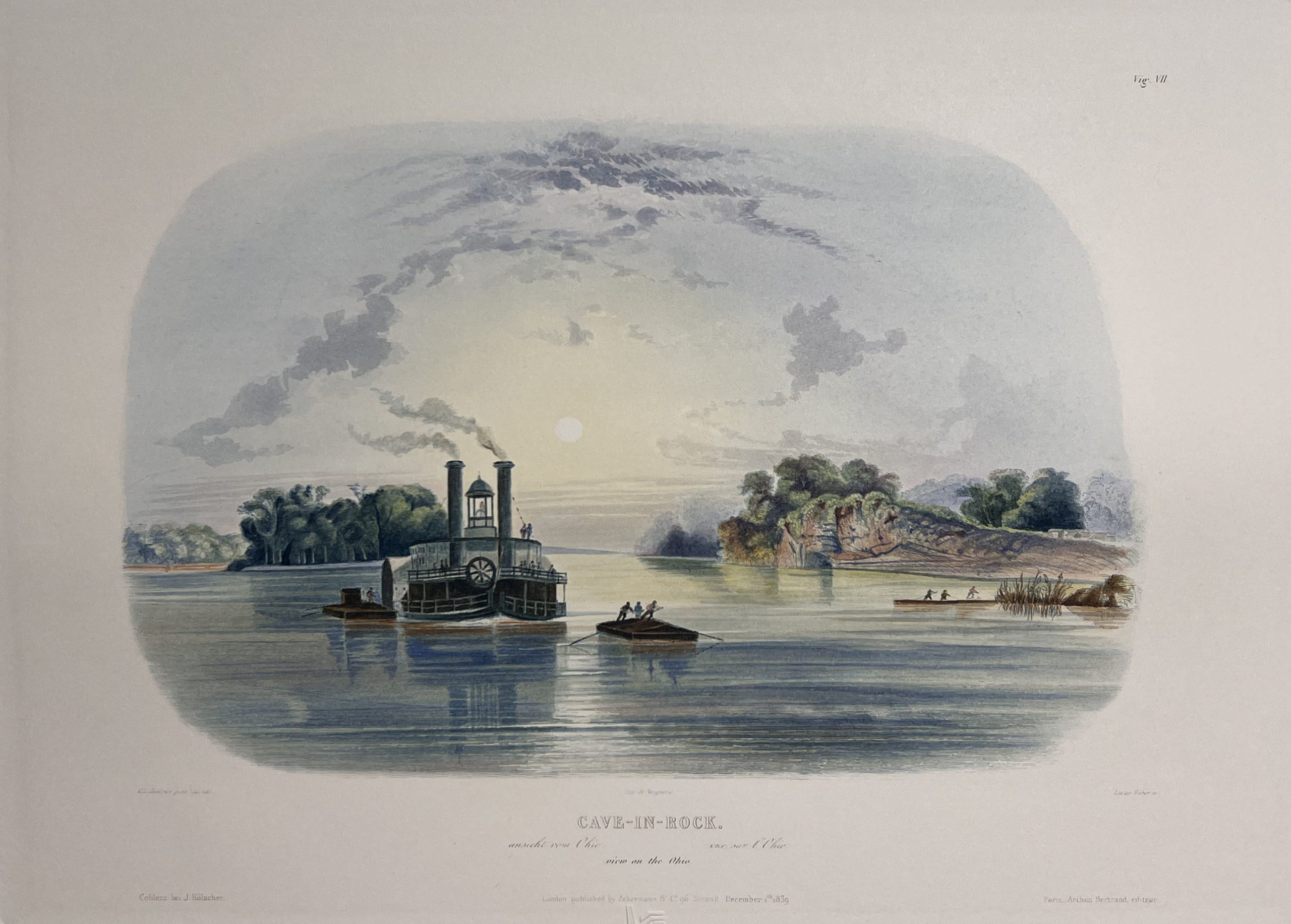1 in stock
Vignette
Pulled from the original steel and copper plates, engraved in Paris between 1836 and 1843 under Karl Bodmer’s direction, after the artist’s own watercolours drawn from nature during the journey.
The engravings are hand-printed in colours, à la poupée, with extensive hand-colouring and some application of gum arabic, in the nineteenth-century manner.
Engraved by Weber
Printed by Bougeard
Having left Pittsburgh by stage, Prince Maximilian and his traveling companions boarded a steamboat on the Ohio River at Wheeling, in what is now West Virginia, on October 9, 1832. Nine days later they arrived at Mount Vernon, Indiana, and sought lodgings ashore for the night. The next morning they headed north from the river some fifteen miles by wagon to the utopian community of New Harmony, where they remained over the next several months before continuing on to St. Louis. During the voyage down the Ohio, Karl Bodmer made numerous studies of the river and various river towns observed along the way.
Resuming the journey downriver in March, 1833, Maximilian noted in his journal on the 18th of having passed an unusual geological formation known as Cave-In-Rock, situated on the Illinois side of the river about thirty miles below Mount Vernon. Bodmer’s view of this landmark, as reproduced in the atlas of aquatints, incorporated earlier drawings of a steamer and other commercial craft to be seen on the Ohio at this time.
This subject exists in at least two slightly differing, printed versions, both engraved by Lucas Weber, and composed from small pencil sketches by Bodmer in the Joslyn collection. Some colored examples suggest a late afternoon scene, while others give an effect of twilight or
moonrise. The Ohio flows westward or southwestward to the Mississippi; Cave-In-Rock, now within bounds of a state park, lies on the north bank of the river. Thus, the viewer is looking westward in this print. Both the sun and the moon rise in the east and set in the west; so it is a setting sun, not a rising moon, which is depicted here.
Other views of New Harmony and its environs were reproduced in this series as Vignette VIII and Tableaux 2 and 5.
Text by David Hunt, Director, Stark Museum, Orange, Texas, USA

